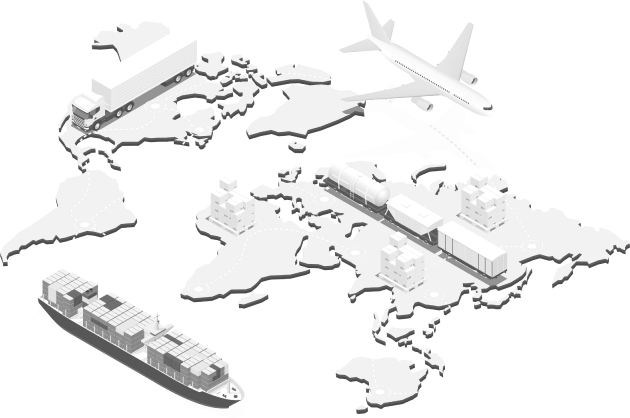The future of the cold chain looks like it will be technologically advanced from not just sourcing to warehousing, but all the way out to delivery. So let’s take a look at the emerging technologies impacting ground transport and warehousing – because there is a lot of ground to cover in between the air and ocean stages of international cargo handling and transport.
No matter whether the pandemic will end soon, the picking and delivery of food along the cold chain remains key. And it is here, in food logistics, where a wide variety of opportunity for new technologies is emerging, as digital innovation became even more widespread due to the continued impact COVID-19 on the industry.
Cutting across multiple global cold supply chains, emerging technologies make a difference on the industry as well as individuals’ jobs. While some may be more inclined to adapt and shift than others, there will still always be change.
It’s About Time, It’s About Place
One of the more prolific technologies is visibility and traceability solutions, as the perishable element makes location and time of delivery even more important than shelf-stable goods. In addition, as food has become less and less local throughout the past few decades, the pendulum of consumer demand has swung the other way.
Consumers now want more transparency on where their food is coming from, and with severe outbreaks of foodborne illnesses happening in the United States, traceability has become a necessity. Not to mention the ease of operation that can exist when every partner knows exactly where a shipment is and has come from in real-time.
There has been a continued focus on providing proof of chain of custody. Technology that clearly shows end-to-end movements (from pick-up, transit, cross-docking, and final mile delivery) is becoming a necessary feature in the cold chain sector. Having the ability to show such data points in real-time along with a predictive delivery time is of great value to all stakeholders.
Sophisticated barcodes, RFID sensors and block chain are a variety of technologies that help bring visibility to life. Adding that together with a user-friendly, easy-to-read dashboard, for instance, can make a real impact on warehousing and transportation operations along cold supply chains.
In addition to these technologies, telematics (the use of GPS and diagnosis technology to optimize routes) is becoming important in the food chain. Utilizing a comprehensive telematics system is crucial to gathering the data required to visualize improvements and optimize an organization to meet increased demand.
Mapping Out Foodborne Illness
Advanced technological solutions can also help stop the effects of a foodborne illness outbreak faster by tracing the contaminated shipment as well as preventing food waste by pinpointing the exact pallet or group of food that needs to be disposed. Past outbreaks such as deadly salmonella and E. coli outbreaks and massive food product recalls may not have had as severe consequences thanks to traceability technology.
In one recent study, measuring consumer sentiment toward food safety – more than 50 percent of the respondents reporting that safety was their main concern when buying food. The data also showed that while only about 20 percent of consumers use QR codes displayed on food packaging right now, that number would increase to 65 percent if the code led to information regarding traceability.
Transforming Technologies
While traceability is an important part of technology in the food chain, it is not the only emerging technology making a difference. Other technologies include picking, sorting and storage automation, electric lift and high-capacity forklifts, augmented reality and camera systems, and temperature control solutions.
In the warehousing sector, challenges within the cold supply chain are driving innovative electric lift truck offerings and integrated technologies designed to meet the industry’s evolving needs and harsh temperatures. As the labor gap widens and in a world that wants things now, these innovations will continue to be instrumental in shaping the way facilities operate and stay competitive – especially for the food and beverage industries.
The industry has become more vertical rather than horizontal in the physical warehouse space, with companies building up rather than out, requiring forklifts and reach-trucks to handle heavier capacities at increasingly higher heights. These systems also need to be able to maneuver extremely well, as the warehouse increases capacity and optimizes its space.
In addition, facilities in cold storage and transportation are home to harsh temperatures that can be uncomfortable for human workers. Several tech providers have started introducing heated wearables and equipment to make working in these cold temperatures more comfortable for its employees. This equipment also has batteries that last longer in cold environments, where in the past, the temperature would affect battery life.
Camera systems also help avoid mishaps, injuries, and accidents within the warehouse and on the road by providing more visibility for operators to better see their surroundings, also pushing efficiency. Augmented reality wearables help efficiency by assisting workers through the integration of technology into their actual field of vision.
A Pandemic’s Impact on Technology
As new technologies emerge, the solutions they provide will continue to impact the food supply chain as well as consumer demand. COVID-19’s swift effect on the food industry also influenced what technology is growing fastest and how it is implemented, as social distancing and food safety became a top priority.
Robotics and automation helped those in the cold chain who were plagued with sick employees and had to adjust to social distancing guidelines. Those who did not have these solutions in place have since turned a keen eye toward these technologies for the future to help in similar situations.
While restaurants and eateries were forced to close or provide limited service, consumers started ordering a wide variety of food and beverage products online – and expecting they be delivered fast. Consequently, warehouse inventory expanded at an overwhelming rate, causing space constraints, picking errors and stocking inefficiencies. Additionally, with social distancing regulations in place, it became increasingly important for operations to understand human movement throughout a facility. And in this environment, crucial lessons were learned.
As companies competed to meet demands, automated vehicles were introduced at an accelerated rate to help with lane stacking, horizontal towing, and conveyor interfacing to increase efficiency and accuracy. These trucks are ideal for repetitive and time-consuming tasks — allowing plant managers to re-allocate operators’ time to more value-added jobs.
Additionally, semi-automated solutions began making production and distribution processes quicker while helping operators reach higher proficiency levels faster and making operations run more effectively.
Automation and telematics solutions such as real-time location systems allow companies to better understand and monitor the movement of people and products throughout a facility.
The future of the cold chain looks like it will be technologically advanced from sourcing to warehousing and delivery. These technologies will remain important in the picking and delivery of food along the cold chain long after this pandemic passes ends.


